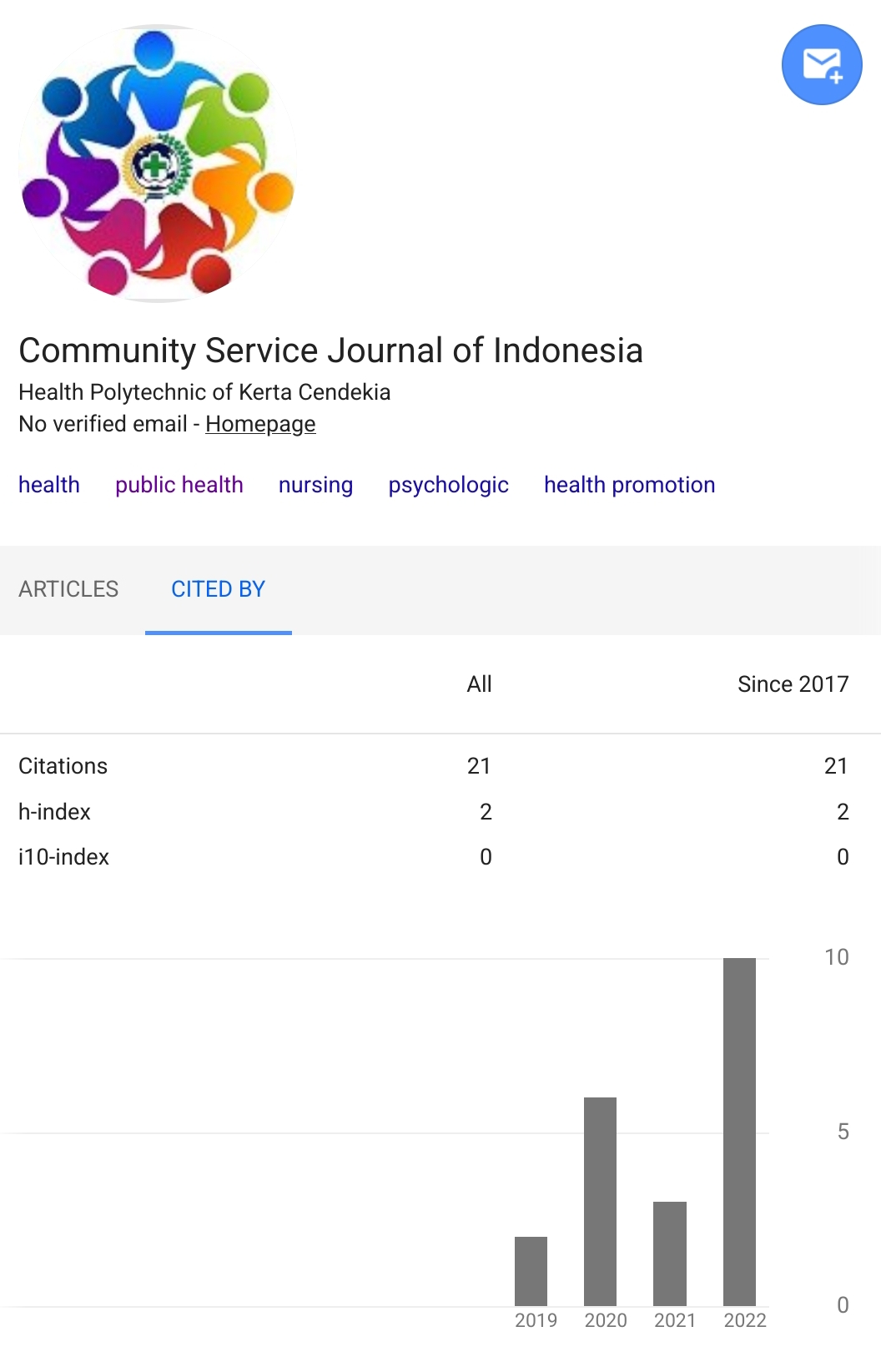EDUCATION ON THE EMERGENCY RESPONSE SYSTEM AS AN EFFORT TO HANDLE FIRE DISASTERS IN ISLAMIC BOARDING SCHOOLS
Abstrak
Islamic boarding schools are one of the educational institutions that have a risk of danger, because in their activities they always use tools and materials to support the teaching and learning process and energy sources that can cause danger. Energy sources such as electricity, LPG gas and chemicals, if not properly managed, can pose a risk of fire. Fire is the most frequently encountered disaster and can be classified as a natural disaster or a disaster caused by human actions. The danger of fire can occur at any time and at any time, resulting in a lot of material, environmental, financial, equipment and human losses. Based on a survey conducted at the location, the knowledge and skills regarding handling emergency conditions, especially fires, have not been mastered by Islamic boarding school administrators and students. The aim of this community service activity is to overcome the fire disaster at the Assalafi Al-Fithrah Islamic Boarding School in Surabaya. The solution provided is to provide disaster mitigation material to Islamic boarding school administrators and students in the Assalafi Al-Fithrah Islamic Boarding School environment in Surabaya and fire prevention training using a light fire extinguisher. The activity was held on Thursday 6 July 2023 with 27 participants consisting of 25 students and 2 boarding school administrators. The results that have been obtained from this activity are that the participants' knowledge about disaster mitigation in Islamic boarding schools has proven to have increased, the skills of Islamic boarding school administrators and students in extinguishing fires using light fire extinguishers have also been achieved.Referensi
Ayu, F. & Ratriwardhani, R. A. (2021). Hubungan Tingkat Pengetahuan dan Sikap Santri Terhadap Kesiapsiagaan dalam Penanggulangan Bencana Kebakaran di Pondok Pesantren X di Kota Surabaya; Business and Finance Journal. Volume 6, Number 1: 21-25. https://journal2.unusa.ac.id/index.php/BFJ/article/view/1976.
Bakornas PB. 2007. Pengenalan Karakteristik Bencana dan Upaya Mitigasinya di Indonesia. Jakarta: Badan Nasional Penanggulangan Bencana.
Badan Nasional Penanggulangan Bencana. 2012. Data Kebencanaan (diakses melalui www.bnpb.go.id diakses pada tanggal 27 September 2017).
Depnakertrans. Materi Evaluasi dan Penunjukan Calon Ahli K3: Pengawasan K3 Penanggulangan Kebakaran. Jakarta.
Fitriana, L., Suroto, & Kurniawan, B. 2017. Faktor-faktor yang Berhubungan dengan Upaya Kesiapsiagaan Karyawan Bagian Produksi dalam Menghadapi Bahaya Kebakaran di PT Sandang Asia Maju Abadi. Jurnal Kesehatan Masyarakat (e-Journal), 5(3), 295–307.
International Fire Service Training Association (IFSTA). 2007. Dasar-Dasar Penanggulangan Kebakaran (Essential of Fire Fighting). Dinas Kebakaran. DKI Jakarta.
Kementerian Dalam Negeri. 2007. Peraturan Menteri Dalam Negeri Nomor 27 Tahun 2007 tentang Pedoman Penyiapan Sarana dan Prasarana dalam Penanggulangan bencana. Jakarta.
Kodoatie, J.R. 2006. Pengelolaan Bencana Terpadu. Jakarta: Yarsif Watampone.
Miranti, R.S. & Mardiana. 2018. Penerapan Sistem Proteksi Aktif dan Sarana Penyelamatan Jiwa sebagai Upaya Pencegahan Kebakaran. Journal of Public Healts, 2(1), 23–32.
Pangesti, Asih Dwi Hayu. 2012. Gambaran Tingkat Pengetahuan dan Aplikasi Kesiapan Bencana pada Mahasiswa Fakultas Ilmu Keperawatan Universitas Indonesia Tahun 2012. Tidak diterbitkan. Skripsi. Fakultas Ilmu Keperawatan Universitas Indonesia.
Patuju, A. 2018. Hubungan Sikap terhadap Resiko Bencana Kebakaran dengan Kesiapsiagaan Menghadapi Kebakaran di Pemukiman Kelurahan Air Putih Kecamatan Samarinda Ulu Kalimantan Timur.
Peraturan Daerah (Perda) Daerah Khusus Ibukota (DKI) Jakarta No. 3 Tahun 1992 tentang Penanggulangan Bahaya Kebakaran dalam Wilayah Daerah Khusus Ibukota Jakarta.
Pusdiklatkar. 2006. Modul Pelatihan: Perilaku Api. Jakarta.
Ramli S. 2010. Pedoman Praktis Manajemen Bencana. Jakarta: Dian Rakyat.
Tarwaka, dkk. 2012. Ergonomi untuk Keselamatan Kesehatan Kerja dan Produktivitas.Surakarta: Uniba Press.
Triyono, Agus. 2001. Teknik Penanggulangan Bahaya Kebakaran di Perusahaan. Majalah Hiperkes dan Keselamatan Kerja. Vol. XXXIV (3), Hal. 34–53.
##submission.copyrightStatement##
##submission.license.cc.by-nc4.footer##Authors who publish with Community Service Journal of Indonesia agree to the following terms:
- Authors retain copyright licensed under a Creative Commons Attribution-NonCommercial 4.0 (CC BY-NC 4.0), which allows others to remix, tweak, and build upon the authors' work non-commercially, and although the others' new works must also acknowledge the authors and be non-commercial, they don't have to license their derivative works on the same terms.
- Authors are permitted and encouraged to post their work online (e.g., in institutional repositories or on their website) prior to and during the submission process, as it can lead to productive exchanges, as well as earlier and greater citation of published work (See The Effect of Open Access). Authors can archive pre-print and post-print or publisher's version/PDF.













